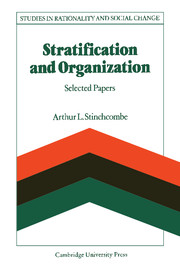1 - Rationality and social structure: an introduction
Published online by Cambridge University Press: 06 July 2010
Summary
The question of rationality has been reopened gradually in sociology over the past couple of decades. Sociology defended its jurisdictional boundaries 20 years ago by presenting itself as the science of the irrational: of sentiments, of basic value commitments, of the folkways and mores, of informal ties in primary groups. In The Structure of Social Action Parsons (1937) had presented us with a birth myth in which sociology was born out of the decay of utilitarianism, as Durkheim, Weber, Pareto, and even Alfred Marshall realized that the framework of rationality was given by deeply irrational value commitments embedded in religion, or in habitual commitments to the values embedded in work activities, or simply, in Pareto, in the unreason, ableness of humankind.
Rationality in the sociological writing of those days was the stuff of economics, or of the rational managers who created the formal organizations in which warm irrational workers formed primary groups, or it was what we methodically eliminated to arrive at the core subject of sociology, the irrational residues. Social movements were outbursts of irrational sentiments in the face of social and technical changes that people could not handle by rational means. The rational was none of our business, and we started to claim formal organizations for sociology only when Herbert Simon argued they were not so rational after all.
- Type
- Chapter
- Information
- Stratification and OrganizationSelected Papers, pp. 1 - 30Publisher: Cambridge University PressPrint publication year: 1986



